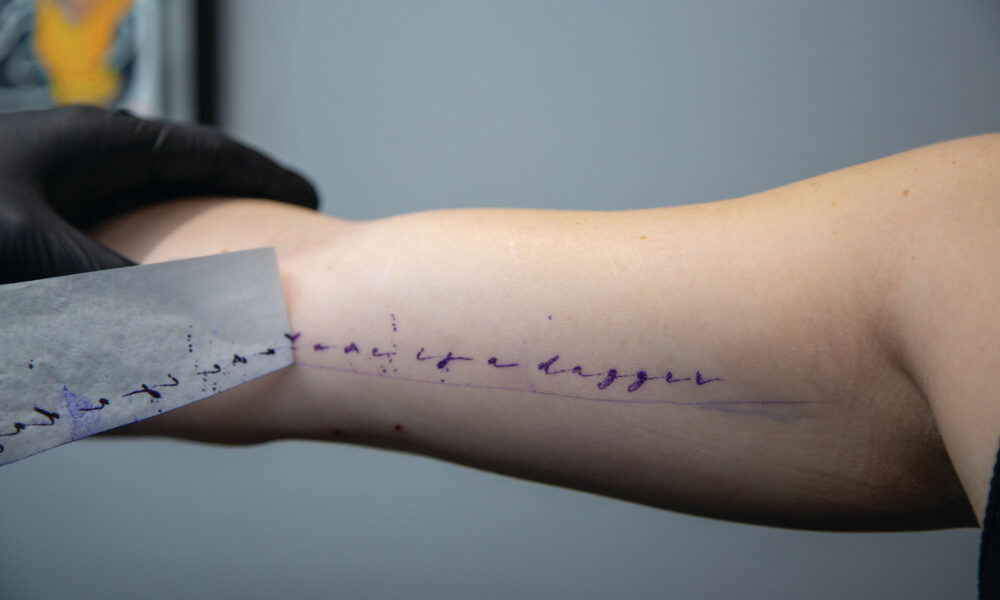An ornate stone house with a plaque reading “Fais-Moi L’Art Gallery” sits on the corner of Rue Cherrier and Saint André, spilling light onto a quiet, dark street. It is the opening night of Poline Harbali’s exhibit They wrote the countries borders on my skin, and all the commotion is inside. People huddle around curated displays featuring photos and journal entries, chronicling the tattoo journeys of 10 women and non-binary people. Working with Poline Harbali, these individuals each designed a tattoo invoking the spirit and personal importance of their Canadian immigration story. Taking four years to complete, her exhibit highlights the immigration journey and its diverse challenges.
“The first three years were about meeting all the participants and researching all the materials,” Harbali explained in an interview with The McGill Tribune. “I didn’t know exactly what I wanted to do visually. It was more about […] creating a link with them and working on the tattoo.”
The project is divided between two rooms, each with its own focus. In the first, transcripts of interviews with the participants and working designs of the tattoos are displayed on the walls. A true chronicle of the process, this space shows the ups and downs of the journey. The second room, using multimedia, immerses the audience into a tattoo session with the participants. It can be jarring; a tattoo table covered in sheets and imitation blood placed in the centre captures the eye. There are, however, more subtle aspects as well: 10 screens lining the wall show the participants’ eyes, and by donning headphones, one can listen to the tattoo gun’s whirl, the light breathing of participants, and ambient music which all together give the impression of being inside the tattoo parlour.
The women and non-binary people Harbali covers in the exhibit have immigrated from countries such as Lebanon, Senegal, and Guatemala. Originally, she had interviewed people of all genders, but in seeing common themes amongst these two groups, Harbali decided to narrow her search.
“[A]fter many interviews, I realized we, like women and non-binary people, have the same relationship to our body in public spaces, like our body is not really our body,” said Harbali. “It’s always something people command and see and discuss so something in common between all of them came out. [Tattooing is an] act of reintegrating our own bodies and not having to ask for permission.”
Harbali’s own journey with tattooing started in concurrence with this project. She remarked that during the immigration process, feeling passive and alone, she wanted to get tattooed to have power over her own body and feel stronger. She learned how to tattoo for the project because she felt it created a more intimate link between herself and the participants. Harbali worked with each person to fashion a design reflecting their immigration journeys. She emphasizes, however, that the design itself is not what’s important.
“It’s not really about the design of the tattoos because it’s very personal, and this is their own story,” said Harbali. “It’s more about the relationship between the body as immigrants and the tattooed body, like why do you want to get tattooed as part of your immigration journey?”
“[Tattooing is an] act of reintegrating our own bodies and not having to ask for permission.”
Harbali said she hasn’t seen any common themes emerge among the many immigration processes and hopes the project reflects that diversity.
“This is […] 10 stories amongst thousands…but all of those stories are very different. Some of them have very difficult times during the immigration processes, others [did not],” Harbali concluded. “[There’s] not just one [story] about immigration, there are many.”
They wrote the countries borders on my skin by Poline Harbali will be displayed at the Fais-Moi L’Art Gallery until Dec. 30.








